10 years ago today *someone* blew up Hezbollah terror mastermind Imad Mughniyeh
Responsible for 1983 bombings of Beirut US Embassy and Marine Barracks, and Argentine Israeli Embassy and Jewish Center, and just about every other Hezbollah terror attack.
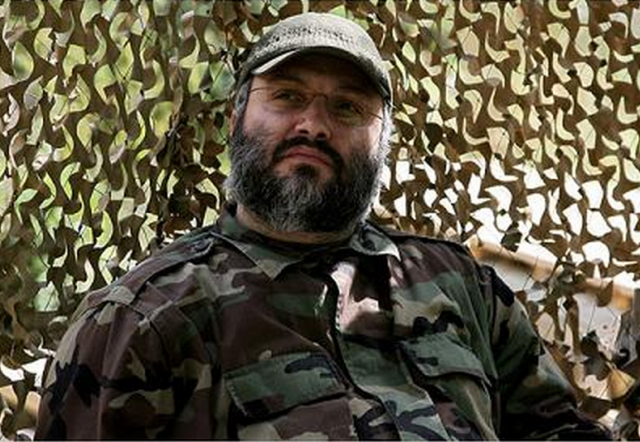
Imad Mughniyeh (also spelled Mughniyah) was the most deadly, notorious and elusive Hezbollah terrorist, responsible for killing more Americans in terror attacks than anyone else prior to 9/11. Mughniyeh was behind just about every Hezbollah terror attack.
His terror credits included the 1983 Beirut Marine and Embassy bombings, the capture and torture death of CIA station chief William Francis Buckley, the kidnappings of Terry Anderson and Terry Waite, and 1985 hijacking of TWA Flight 847, and death of U.S. Navy diver Robert Stethem, who was beaten mercilessly until being dumped onto the tarmac.
Mughniyeh also was implicated in the 1992 bombing of the Israeli embassy in Buenos Aires, killing 29, and 1994 bombing of the AMIA cultural building, killing 85 people.
On the evening of February 12, 2008, Mughniyeh was assassinated in Damascus. The Lebanese pro-Hezbollah newspaper Al Akhbar provided this account of his last moments:
On the evening of 12 February 2008, Mughniyeh had just finished a meeting with some of the most senior Palestinian leaders in the Syrian capital of Damascus. They had discussed ways to develop the capacities of the Palestinian resistance inside Palestine, and Gaza in particular.
Around 10:15 pm, Mughniyeh left his apartment building in the Kfar Sousa neighborhood of Damascus. He came down alone and started to walk toward his car, which was parked in an area of about 800m2 that was used as a parking lot outside a cluster of buildings.
The explosion was heard around 10:20 pm. Some people rushed to the location, including those Mughniyeh was seeing in the apartment. It turned out that when Mughniyeh had stepped out of the building’s main gate, a 2006 silver Mitsubishi Pajero 4×4 parked nine meters away exploded, killing him alone, on the spot.
That Mughniyeh died in an explosion does not appear to be in much dispute. Who killed him, and how, has been the subject of many accounts, with most pointing to the Israelis, perhaps in conjunction with or assisted by the U.S.
Al Akhbar provided this theory:
Extensive investigations revealed the role of Israel and its direct responsibility for the assassination. They showed that the Mossad, which was under the leadership of Meir Dagan at the time, was responsible for the operation from A to Z. Direct planning inside and outside Syria took almost one month after a much longer period of indirect preparations, according to sources knowledgeable of the case….
In the early afternoon of 12 February 2008, one of the implementers drove the Pajero, equipped with explosives in its trunk door, and parked it outside the building frequented by Mughniyeh.
At dusk, the team of four individuals took the getaway Lancer and, after making sure that the construction workers had left the building under construction next to Mughniyeh’s building, three of them went upstairs to observe the parking lot, the target, and the vehicle with the explosives.
They chose an apartment on the sixth floor. One of them surveyed the area with binoculars, another was charged with detonating the explosives, and the third was for protection. The fourth waited in the getaway car parked at the back of the building close to the fence.
Right before 10:20 pm, Mughniyeh exited the building and, as soon as he reached the well-lit lot nine meters away from the Pajero, the bomb was detonated and he was killed instantly. The implementing team left the building and headed toward their getaway car.
A pro-Hezbollah paper blaming Israel is not that surprising. But the paper doesn’t go into how Israel managed to penetrate the secrecy that surrounded Mughniyeh’s movements. He was a wanted man, and extensive precautions were taken.
The book Spies Against Armageddon, by Dan Raviv and Yossi Melman, provides this account:
For Israeli intelligence, the most important target in Hezbollah was not Nasrallah. It was his “defense minister,” Imad Mughniyeh. He had been the Mossad’s most wanted man—and also on the FBI’s official list—for many years. Israel tried to kill Mughniyeh numerous times…
He was very elusive. Knowing he was a target, he changed his face, he changed his safe houses often, he changed his vehicles, and he barely traveled: only to Damascus, Syria, and to his masters in Iran. Until Dagan became the Mossad chief, those locales were out of bounds for Israeli assassination operations.
In the end, the Mossad showed that it could be patient as a hawk waiting for its prey. Waiting and watching, for one mistake. One opportunity.
That came in February 2008 in Damascus.
Syria was a dangerous place for Mossad operatives. The government had a large security apparatus, unusually adept at spying on its own people. Foreigners, too, were under constant watch. When the Mossad wanted to operate in Damascus, it would be highly unlikely that Israelis would pose as citizens of a Western country—the usual technique in most places. It would be wiser to melt into Syrian crowds on the streets….
Piecing together humint and telephone intercepts, Israeli intelligence managed to learn a great deal about Mughniyeh’s private life and tracked his movements, finally aware of his post-plastic surgery appearance. They took advantage of two human weaknesses, quite uncharacteristic for a master terrorist on the run.
First, hosted by Syrian intelligence in one of its guest apartments, and in constant contact with Iranian “diplomats,” Mughniyeh felt totally comfortable in Damascus. Living for decades with the assumption that he was an assassination target, he must have craved a place to feel safe. He let down his guard when in Syria, moving around with full self-confidence and no fear.
He also permitted himself to do, in Damascus, what he did not do at home in Lebanon: fool around with women. That, too, meant that he was literally a man about town, in moving cars more than a cautious man would be. Spies for the Mossad took note of routes that he repeatedly took.
A Kidon team, acting with great care in an enemy capital, managed to plant a bomb in or on Mughniyeh’s Japanese four-wheel-drive vehicle on February 12, 2008. The terrorist’s career ended with a blast. His body parts were scattered, but no one else was killed.
Perhaps the most startling claim came from The Washington Post and Newsweek in January 2015, that it was a joint Israeli-CIA operation. We covered it in our post, Leaks: CIA helped Israel assassinate Hezbollah’s Imad Mughniyah.
The Washington Post reported, CIA and Mossad killed senior Hezbollah figure in car bombing:
On Feb. 12, 2008, Imad Mughniyah, Hezbollah’s international operations chief, walked on a quiet nighttime street in Damascus after dinner at a nearby restaurant. Not far away, a team of CIA spotters in the Syrian capital was tracking his movements.
As Mughniyah approached a parked SUV, a bomb planted in a spare tire on the back of the vehicle exploded, sending a burst of shrapnel across a tight radius. He was killed instantly.
The device was triggered remotely from Tel Aviv by agents with Mossad, the Israeli foreign intelligence service, who were in communication with the operatives on the ground in Damascus. “The way it was set up, the U.S. could object and call it off, but it could not execute,” said a former U.S. intelligence official.
The United States helped build the bomb, the former official said, and tested it repeatedly at a CIA facility in North Carolina to ensure the potential blast area was contained and would not result in collateral damage.
Newsweek had a similar, but not identical account based on leaks, How the CIA Took Down Hezbollah’s Top Terrorist, Imad Mugniyah:
Media reports fingered Israel’s legendary Mossad for the hit. But according to former U.S. intelligence officials interviewed by Newsweek, the Mugniyah hit was a CIA operation, authorized personally by President George W. Bush and carried out by the CIA under the direct supervision of then-director Michael Hayden and a very, very small group of top CIA officials.
“That was us,” said a former official who participated in the project, on condition of anonymity to discuss the operation. “The Israelis told us where he was and gave us logistical help. But we designed the bomb that killed him and supervised the operation.”
Said another source, a former senior CIA operative with deep Middle East experience: “It was an Israeli-American operation. Everybody knows CIA did it—everybody in the Middle East anyway.” The CIA’s authorship of Mugniyah’s bloody death, the operative said, should have been told long ago. “It sends the message that we will track you down, no matter how much time it takes,” he said. “The other side needs to know this.”
In an interesting angle, there was speculation within Hezbollah and Iran that the Syrians were complicit, as The Guardian reported in 2010:
US reports from February 2008, revealed by WikiLeaks, described how the regime of President Bashar al-Assad was shocked when Imad Mughniyeh was murdered by a sophisticated bomb planted in his car. Mughniyeh, a founder member of the militant Lebanese Shia movement, was wanted by the US, Israel, France and other governments. Hezbollah is backed by Iran and Syria.
“Syrian military intelligence and general intelligence directorate officials are currently engaged in an internecine struggle to blame each other for the breach of security that resulted in Mughniyeh’s death,” the US embassy reported.
Saudi Arabia’s ambassador to Lebanon, the well-connected Abdel Aziz Khoja, told US diplomats in Beirut that Hezbollah believed the Syrians were responsible for the Damascus killing. No Syrian official was present at Mughniyeh’s funeral in Beirut’s southern suburbs the following day. Iran was represented by its foreign minister, who, the Saudi envoy said, had come to calm down Hezbollah and keep it from taking action against Syria.
Another rumour, Khoja said, was that Syria and Israel had made a deal to allow Mughniyeh to be killed, an Israeli objective. No one has ever claimed responsibility for the assassination, though Israel has been widely blamed for it.
US diplomats reported that the killing led to tensions between Syria and Iran, perhaps because Tehran shared Khoja’s suspicion of Syrian complicity in the affair.
A recent book by Ronen Bergman Rise and Kill First: The Secret History of Israel’s Targeted Assassinations, provides an extensive account based on interviews with Israeli intelligence operatives. Bergman writes that it was an Israeli operation, with help from the CIA:
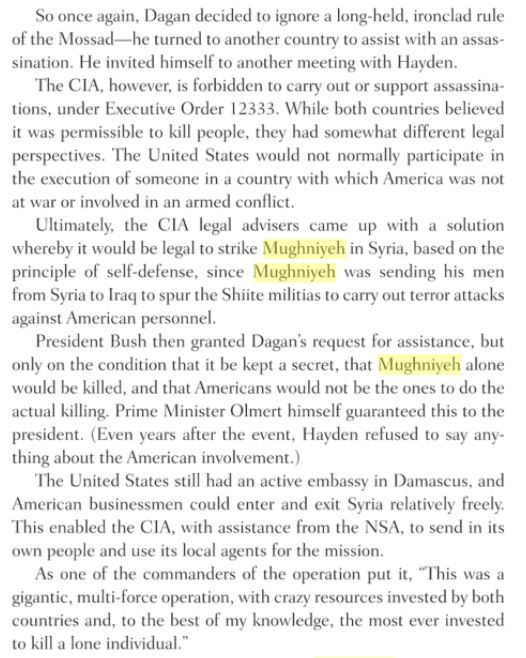
It took meticulous planning to locate a way to get to Mughniyeh even once he was located, and to find a place to put a bomb that would not cause collateral damage. February 12, 2008, was when it all came together.

And then it was done:
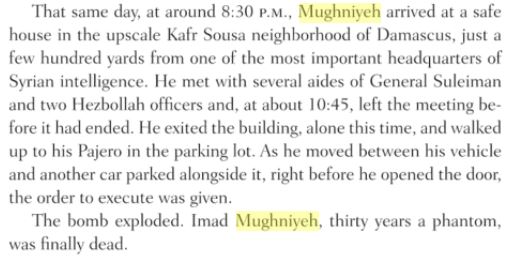
Regardless of which of these accounts is precisely correct, no one seems to doubt that the Israelis were primarily behind the assassination of Mughniyeh. The expected retaliation has not yet come, perhaps because the 2006 Lebanon War, which destroyed much of the country, served as a deterrent to Hezbollah provoking another conflict.
But it would not be the last assassination of Mughniyeh. In January 2015, Israel took out several senior Hezbollah operatives in Syria, including rising Hezbollah star Jihad Mughniyeh, son of Imad Mughniyeh.
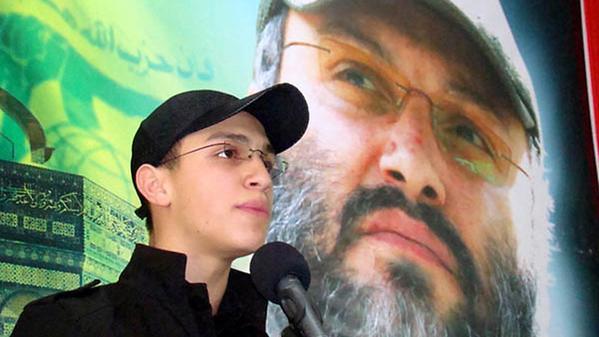
Then in May 2016, the brother-in-law of Imad Mughniyeh, and its top commander in Syria, Mustafa Amine Badreddine, was assassinated in a large explosion near Damascus airport.
The circumstances of the explosion also remained a mystery, with no one believing Hezbollah claims that Badreddine was killed by anti-Assad rebel artillery:
Badreddine was considered a master bomb maker, credited with developing that combination of explosives and gas that took down the U.S. Marine barracks in Beirut and numerous American and other diplomatic facilities. Badreddine of late was commander of Hezbollah forces propping up the Assad regime, and was hated not only by Israeli but also by many Arab states. So he had plenty of enemies, and plenty of people who wanted him dead.
But he also lived in the shadows, with few photos of him prior to his death (Hezbollah has released more photos after his death) and a life lived under assumed names.
While pro-Hezbollah Lebanese media immediately blamed Israel. That made perfect sense in light of Israel’s presumed assassinations of numerous Hezbollah leaders, including Imad Mughniyeh (mastermind of almost all attacks on Israel and the U.S.), his son Jihad Mughniyeh (who was killed along with several high level operatives and an Iranian general),Hassan Laqqis (key Hezbollah link to Iranian weapons procurement) and Samir Kuntar (who killed an Israeli girl by smashing her head against the rocks on a beach).
Blaming Israel for Badreddine’s death would require Hezbollah to retaliate in some deadly way in order to save face. But that would risk sparking a wider conflict with Israel at a time that neither Hezbollah nor its Iranian sponsor can afford such a conflict while bogged down in Syria.
A funny thing then happened. Pro-Hezbollah media started deleting the accusations against Israel. Hezbollah then released a statement today improbably blaming a rebel artillery attack for Badreddine’s death.
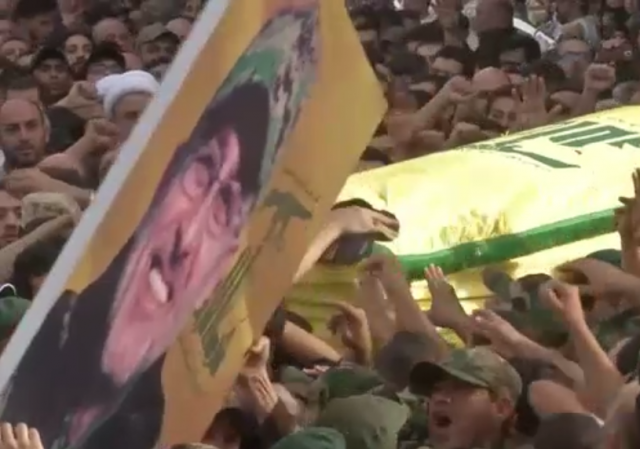
So the end of the story is that we don’t really know who killed Imad Mughniyeh, though everyone presumes it was Israel, perhaps with U.S. assistance.
We know that it happened 10 years ago. And Hezbollah is still waiting for revenge.
 DONATE
DONATE
Donations tax deductible
to the full extent allowed by law.









Comments
I had no idea we had a CIA facility in North Carolina but a quick search came up with this: This Is Reportedly The CIA’s Shadowy Car Bomb Facility In North Carolina
Can you imagine the size of the balls on the agents who planted the bomb????
They must have walked around like John Wayne!
Well Pilgrim, we need some more of them after 8 years of barky the wonder Muslim Dream Horse.
Well done 4th, well done.
It seems very pinprick-y.
When the guy is in a meeting with his handlers in our eyes, it would be better to blow up the whole meeting, and then set off some type of deterrent/afterblast for anybody trying to rescue them.
The Iranians would have to deny they were there, and any other groups working with him Would have a choice of saying “yeah we’re in thick with terrorist actions” or publicly denies any of their people were involved.
We should do much, much more of this type of operation. Anywhere Palestinians or Hezbollah travel.
At some point, shouldn’t everyone recognize that that just targeting leaders is not enough? This is war, and in war you cause such a large loss of life and property that the other side cries uncle. I think the kill ratio should be immediately raised to 100,000 to one, give that a year and then raise it to a million to one.
Mughniyeh has gone to the reward due to him. I think it was not what he was expecting.
If we helped effect his exit from his murderous life, good for us!
Rasmea Odeh must be nervous.
He blowed up real good.
dun blowed up with a tar..
The facility was also used in preparation for the Osama Bin laden hit. The striper fishing was great at the end of the sea plane ramps back in the day. Security is different today.
We can be assured such killings would not occur for the next 8 years.
Happy 10th anniversary!
Keyn Yirbu and Mazal tov on a successful operation !!!! ABJ
It is insane that we have self imposed restrictions on ourselves on terrorists that have killed many Americans
It’s not a law, it’s an executive order, i.e. an instruction from the president, so all it really means is don’t do something so potentially risky without informing the president and getting his approval. Hence the need for presidential approval of the drone kill list.
I think I’ll have a cigar and a stiff drink to salute these nameless people.